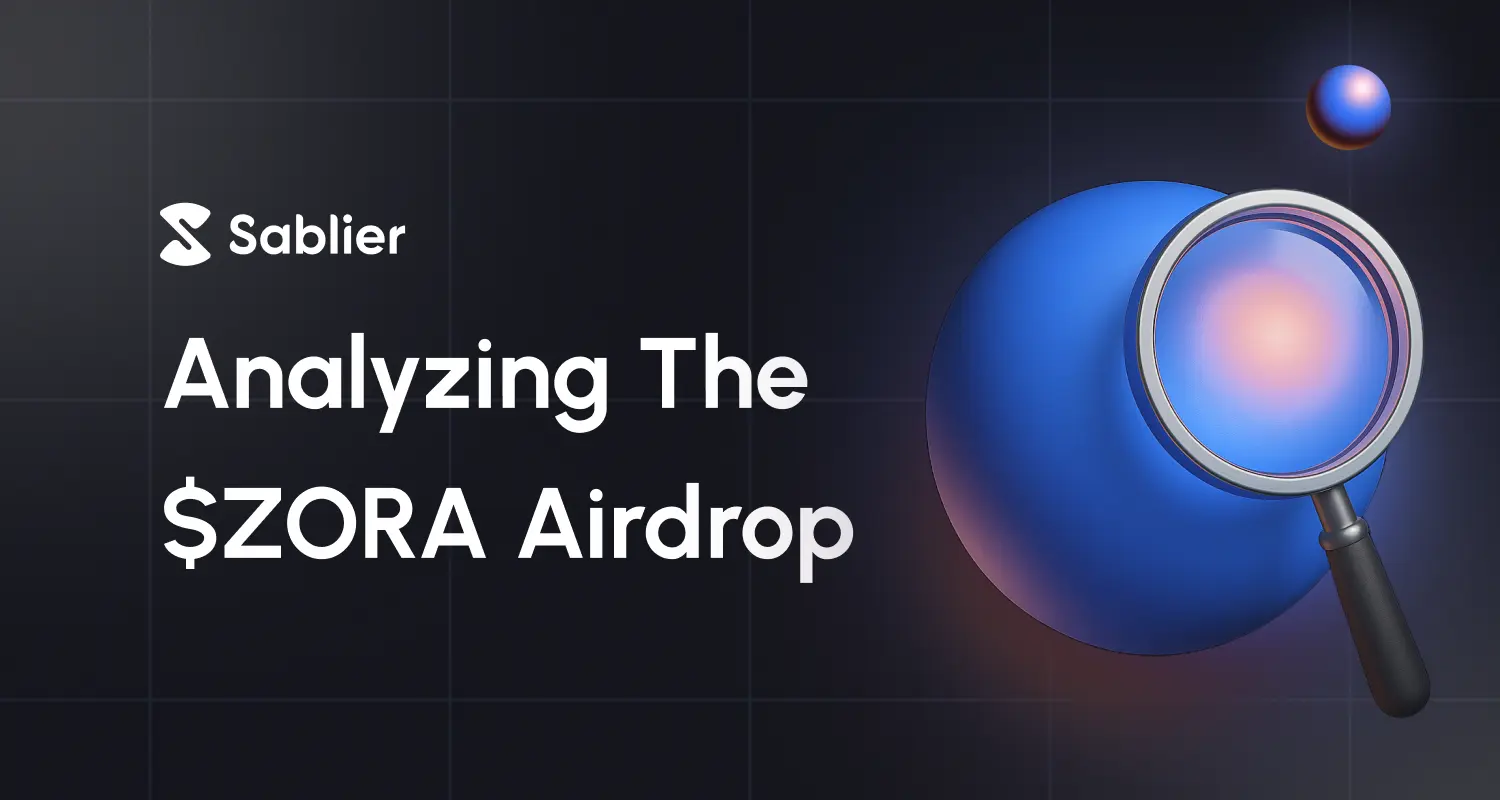Case Study: Analyzing the $ZORA Airdrop
Sablier Research Series: Airdrop Strategy and User Incentives

When it comes to token launches, few things are as hyped and as misunderstood as airdrops.
Positioned as a reward mechanism for early users, airdrops often promise much more than they deliver. The recent $ZORA token launch is a prime example. Framed as a “fun” experiment for the onchain creator economy, it ended up frustrating loyal users, missing key onboarding opportunities, and failing to drive long-term engagement. In this post, we break down what went wrong, why it matters, and how projects can avoid making the same mistakes.
Key Stats
- $20M in tokens distributed
- 526,000+ wallets received airdrops
- Only 0.7% bought more tokens (~$3.5M in purchases)
- 81.5% of recipients made zero follow-up transactions
- Just 0.3% had 10+ transactions post-airdrop
- Token price dropped >65% within hours of launch
- $2,000 wasted on onchain storage (Base), vs. $1 using a Merkle airdrop
Sources: Serotonin and internal research from Sablier Labs.
What Went Wrong
1. Lack of Clear Objectives
Zora claimed the token was “for fun” with no governance, no equity rights, etc. while executing a massive airdrop that mimicked more serious, value-driven token launches. This led to mixed messaging, unclear expectations, and a lack of incentives to hold or acquire the token. Later attempts to assign utility will look reactive.
Mistake: ignoring token utility.
2. Poor Targeting & Distribution Design
Instead of focusing on high-conviction users (like weekly creators with significant activity), Zora opted for broad eligibility. Many core contributors received very small allocations (e.g. $77 for users with 400+ mints), while airdrop farmers got equal or better rewards.
Mistake: not focusing and prioritizing core loyal users.
3. No Incentivized Onboarding
The airdrop didn’t drive users into the product. There was no requirement to use the Zora app, no onchain delegation, and no gamified onboarding journey. Restricting airdrops to the app itself, and requiring users to mint/post content in order to claim, would have offered a great onboarding experience.
Mistake: not leveraging the airdrop as a growth funnel.
4. High Burn Rate for No Retention
Zora spent a lot of resources on this token launch: ~$2,000 on-chain (they would have spent only $1 had they used a merkle architecture), millions in token value, and a lot of team effort. In return, it got a 3-day spike in activity, followed by rapid decay.
Mistake: airdrops are expensive and should be treated as such, using them as a one-off PR stunt is inefficient and demoralizes users.
What They Could’ve Done Instead
Here’s what Zora could have done instead, to make this airdrop campaign a real success.
- Focused targeting: reward top 5,000-10,000 engaged users. Not more. Use mint counts, spending, social signals, and verified NFT communities to filter out Sybil wallets and known airdrop farms.
- In-app claiming UX: restrict airdrop claims to the Zora app, so users are forced to download it and onboard via the app.
- Airdrop gamification: give a base reward and let users unlock more through missions (mint, refer, engage). Encourage creators to compete as cohorts or collectives.
- Soft utility: offer exclusive features, access, fee discounts, or fee revenues to token-holders. Could also include token-gated discovery or creator analytics.
- Use proper airdrop architecture: using onchain storage isn’t the right way of doing things. Modern airdrops leverage a merkle architecture for a reason. It’s cheaper, more efficient, and battle-tested.
Conclusion
The $ZORA airdrop serves as a case study in how not to structure user-facing token launches.
Despite noble intentions and a strong brand, the lack of clear goals, thoughtful targeting, and product-driven incentives led to a fleeting spike in activity, but no durable engagement.
As airdrops mature from speculative gimmicks into serious growth tools, teams must design them with precision: reward real users, tie distribution to usage, and align incentives with long-term value creation.
Otherwise, you're not building a community, you’re just subsidizing exit liquidity.


